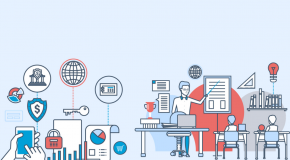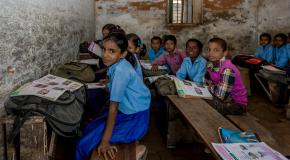The recent UNESCO Global Monitoring Report is a timely reminder: it throws down the gauntlet for the post-2015 development agenda negotiations currently taking place, re-focusing attention on the proposed Sustainable Development Goal (SDG) for education and asking what we need to do to ensure "inclusive and equitable quality education and promote lifelong learning opportunities for all".
The ambition of the education SDG is admirable: It’s encouraging to see learning at the heart of the agenda. One of the major criticisms of the expiring Millennium Development Goal was its narrow focus, prioritising access to education over the quality of that education—as Lant Pritchett, senior fellow at the think tank, Centre for Global Development, puts it: "schooling ain’t learning".
It’s also encouraging to see that this focus hasn’t been stripped out as we drill down through the indicators that underpin the goal and its accompanying targets. Minimum learning standards appear in several of these proposed indicators, relating to concepts such as reading, literacy, numeracy and mathematics.
The importance of measuring progress
It’s these indicators—as unglamorous as they seem—that will allow us to measure progress, supporting comparisons between different countries and providing the benchmark against which to hold governments, donors and the international community to account. It’s important therefore that we get them right. I think there are two key areas that need urgent attention:
First, we need to decide exactly what we are measuring in each indicator—reading and literacy are actually quite different constructs, as are numeracy and mathematics. Even in its most basic form literacy is a lot broader than reading. Similarly, the OECD’s definition of numeracy goes further than mathematics—it hinges on the ability to not just understand mathematical concepts but to apply them in a variety of situations.
These differences are both real and important. Assessments of education programmes run by the UK's Department for International Development (DFID) in countries such as Nigeria and Tanzania show that, even when children can read, write or complete mathematical calculations, their ability to apply this knowledge to both everyday and new contexts often remains limited. In a world where the ability to adapt to changing circumstances is an increasingly valuable life skill, it’s crucial we capture this.
Second, we need to decide how exactly we are defining progress. The indicators centre on a standards approach, implicitly or explicitly referring to minimum levels of proficiency. However, currently, there are no internationally agreed standards in literacy, reading, mathematics or numeracy. At the very least, there needs to be consensus around qualitative descriptions that outline exactly what learners should be able to do against each indicator.
As the world’s statistical experts gather next month to start thrashing out the finer details around the SDG indicators, now’s the time to address these unanswered questions, clarify meanings and ensure we’re all reading from the same page.
The views and opinions expressed in this article are those of the authors and do not necessarily reflect the views of The Economist Intelligence Unit Limited (EIU) or any other member of The Economist Group. The Economist Group (including the EIU) cannot accept any responsibility or liability for reliance by any person on this article or any of the information, opinions or conclusions set out in the article.




